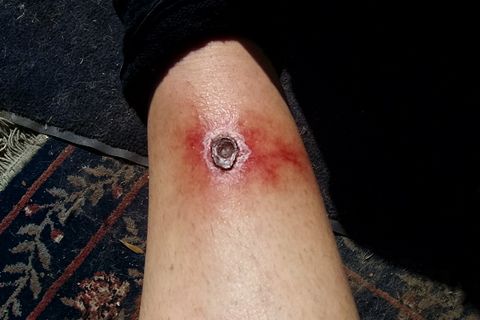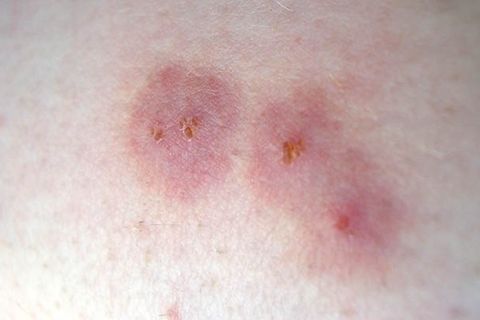These pictures can help you figure it out.
Plus, exactly what you should do to treat them—from harmless spots to venomous bites.
The following written content by Korin Miller

It’s only natural to assume that you’d know when you’ve been bitten by a spider. After all, when you live through a huge fear, you’d think you’d be aware that your nightmare has just come true. Still, it’s 100% possible to notice a bite and have zero clue what kind of creepy insect it came from.
As a whole, spider bites don’t actually happen as much as people think. “Spiders get blamed for a lot of skin irritations that are not their fault,” explains Nancy Troyano, Ph.D., a board-certified medical entomologist with Ehrlich Pest Control.
That said, spider bites can and do happen. Some are completely harmless—causing just a bit of redness and swelling—and heal up after just a couple of days, while other venomous bites can cause serious complications, especially if you don’t see a doctor right away.
But how can you know for sure if that bite you’re dealing with is from a spider—and a dangerous one, at that? We tapped a doctor and entomologists for tips on what to look for and rounded up photos to give you an idea of what spider bites could look like. Here’s how to identify them, and what you should do if you’re unlucky enough to receive a bite.
First, why do spiders bite?

K2SLEDDOGS / FLICKR CREATIVE COMMONS
Breathe a sigh of relief: Most types of spiders don’t actually go out of their way to bite humans. “Spiders bite humans as a defense mechanism, a last resort to protect themselves,” says Troyano. When spiders do bite, they do so to paralyze their prey—however, you’re not it.
That said, there can be situations where a common house spider (like a jumping spider or wolf spider) might mistake you for prey or feel like you’re threatening them, even if you’re not trying to take them on. Maybe you put your hand in an old baseball glove where a spider took up residence or you happen to accidentally prop up your feet right near where they were hanging out. Whatever it is, an innocent move to you could seem like a threatening one to a spider, causing them to bite.
What does a spider bite look like? Are there typical symptoms?

If you’re bitten and see a spider scurrying away, the odds are pretty high that it was the culprit. If you’re not sure where your bite came from, it might be trickier to pin down. “With a few exceptions, it is very hard, even for medical professionals, to positively identify a bite or skin irritation as a spider bite.” Troyano says, and the fact is true for many insect bites. However, there are a few signs that it could be from a spider:
✔️ Two tiny holes: Spiders have two fangs, so you might see two tiny holes in the center of the bite, Russell says.
✔️ Redness and swelling: When a spider bites, foreign proteins from its saliva are injected into your skin, Troyano explains. That can cause a localized reaction that’s similar to what might happen with if you were bitten by a mosquito or stung by a bee. You might have swelling bite, redness, or irritation around the bite site.
✔️ Mild pain: As for what it feels like, Troyano says most people compare it to how you’d feel when you’re stung by a bee—so, not fun.
✔️ Possible itching: This symptom depends on how you personally react to an insect bite, but some spider bites can cause the release of the compound histamine in your body, and that can cause itching, says Nick Kman, M.D., an emergency medicine physician at The Ohio State University Wexner Medical Center. Read more from Prevention.





